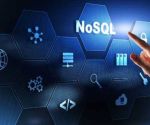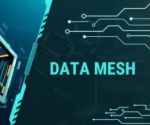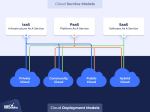“Data Analytics is the process of examining data sets in order to find trends and draw conclusions about the information they contain.”
Most companies are collecting loads of data all the time—but, in its raw form, this data doesn’t really mean anything. This is where Data Analytics comes in.
A Data Analyst will extract raw data, organize it, and then analyze it, transforming it from incomprehensible numbers into coherent, intelligible information. Having interpreted the data, the data analyst will then pass on their findings in the form of suggestions or recommendations about what the company’s next steps should be.
You can think of Data Analytics as a form of Business Intelligence, used to solve specific problems and challenges within an organization. It’s all about finding patterns in a dataset which can tell you something useful and relevant about a particular area of the business—how certain customer groups behave, for example, or how employees engage with a particular tool.
Data Analytics helps you to make sense of the past and to predict future trends and behaviors; rather than basing your decisions and strategies on guesswork, you’re making informed choices based on what the data is telling you. Armed with the insights drawn from the data, businesses and organizations are able to develop a much deeper understanding of their audience, their industry, and their company as a whole—and, as a result, are much better equipped to make decisions and plan ahead.
What Is Data Analytics
Data Analytics is the science of analyzing raw data to make conclusions about that information. Many of the techniques and processes of data analytics have been automated into mechanical processes and algorithms that work over raw data for human consumption.
Data Analytics is a broad term that encompasses many diverse types of data analysis. Any type of information can be subjected to data analytics techniques to get insight that can be used to improve things. Data Analytics techniques can reveal trends and metrics that would otherwise be lost in the mass of information. This information can then be used to optimize processes to increase the overall efficiency of a business or system.
For example, manufacturing companies often record the runtime, downtime, and work queue for various machines and then analyze the data to better plan the workloads so the machines operate closer to peak capacity.
Data Analytics can do much more than point out bottlenecks in production. Gaming companies use Data Analytics to set reward schedules for players that keep the majority of players active in the game. Content companies use many of the same data analytics to keep you clicking, watching, or re-organizing content to get another view or another click.
Data Analytics is important because it helps businesses optimize their performances. Implementing it into the business model means companies can help reduce costs by identifying more efficient ways of doing business and by storing large amounts of data. A company can also use Data Analytics to make better business decisions and help analyze customer trends and satisfaction, which can lead to new—and better—products and services.
Types Of Data Analytics
Data Analytics is a broad field. There are 4 primary types of data analytics: descriptive, diagnostic, predictive and prescriptive analytics. Each type has a different goal and a different place in the data analysis process. These are also the primary data analytics applications in business.

- Descriptive Analytics helps answer questions about what happened. These techniques summarize large datasets to describe outcomes to stakeholders. By developing key performance indicators (KPIs,) these strategies can help track successes or failures. Metrics such as return on investment (ROI) are used in many industries. Specialized metrics are developed to track performance in specific industries. This process requires the collection of relevant data, processing of the data, data analysis and data visualization. This process provides essential insight into past performance.
- Diagnostic Analytics helps answer questions about why things happened. These techniques supplement more basic descriptive analytics. They take the findings from descriptive analytics and dig deeper to find the cause. The performance indicators are further investigated to discover why they got better or worse. This generally occurs in three steps:
- Identify anomalies in the data. These may be unexpected changes in a metric or a particular market.
- Data that is related to these anomalies is collected.
- Statistical techniques are used to find relationships and trends that explain these anomalies.
- Predictive Analytics helps answer questions about what will happen in the future. These techniques use historical data to identify trends and determine if they are likely to recur. Predictive analytical tools provide valuable insight into what may happen in the future and its techniques include a variety of statistical and machine learning techniques, such as: neural networks, decision trees, and regression.
- Prescriptive Analytics helps answer questions about what should be done. By using insights from predictive analytics, data-driven decisions can be made. This allows businesses to make informed decisions in the face of uncertainty. Prescriptive analytics techniques rely on machine learning strategies that can find patterns in large datasets. By analyzing past decisions and events, the likelihood of different outcomes can be estimated.
These types of Data Analytics provide the insight that businesses need to make effective and efficient decisions. Used in combination they provide a well-rounded understanding of a company’s needs and opportunities.
Data Analytics Techniques
There are several different analytical methods and techniques Data Analysts can use to process data and extract information. Some of the most popular methods are listed below.
- Regression Analysis entails analyzing the relationship between dependent variables to determine how a change in one may affect the change in another.
- Factor Analysis entails taking a large data set and shrinking it to a smaller data set. The goal of this maneuver is to attempt to discover hidden trends that would otherwise have been more difficult to see.
- Cohort Analysis is the process of breaking a data set into groups of similar data, often broken into a customer demographic. This allows data analysts and other users of data analytics to further dive into the numbers relating to a specific subset of data.
- Cluster Analysis is a class of techniques that are used to classify objects or cases into relative groups called clusters. It can be used to reveal structures in data — insurance firms might use cluster analysis to investigate why certain locations are associated with particular insurance claims, for instance.
- Monte Carlo Simulations model the probability of different outcomes happening. Often used for risk mitigation and loss prevention, these simulations incorporate multiple values and variables and often have greater forecasting capabilities than other data analytics approaches.
- Time Series Analysis tracks data over time and solidifies the relationship between the value of a data point and the occurrence of the data point. This data analysis technique is usually used to spot cyclical trends or to project financial forecasts.
- Sentiment Analysis: Sentiment analysis uses tools such as natural language processing, text analysis, computational linguistics, and so on, to understand the feelings expressed in the data. While the previous six methods seek to analyze quantitative data (data that can be measured), sentiment analysis seeks to interpret and classify qualitative data by organizing it into themes. It is often used to understand how customers feel about a brand, product, or service.
Importance Of Data Analytics
These days, most departments in organizations use data analytics to examine present situations and predict future scenarios. The results of these actions can bring many benefits and advantages to an organization. These benefits include:

1. Reduce the cost of operation
Although paying a Data Analyst might be expensive, it is cheaper in the long run compared to its benefits. With good Data Analysis, you can prevent financial risk, ensure data security, and perform other actions that might save you a fortune. Also, organizations use data analytics to check for functions that use more finances than they should and others that need more financing. This helps cut costs – especially operations and production–and ultimately replaces manual activities with technology.
2. Predict future trends
Organizations can predict future trends and innovations with Data Analytics. Using Predictive Analysis tools, organizations can develop future-focused products and services and stay at the top of their market. Using good marketing, these organizations can create demand for these offerings and capture a larger market share. They can even obtain patents for futuristic inventions to maintain an advantage over competitors and maximize profits.
3. Monitor product performance
Data Analytics is used in tracking customers’ behavior towards products or services. You can use it to identify why sales are low, what products people buy, why they are buying them, how much they are spending on these products, how you can sell your products better, and many other queries. Studying audience behavior helps enterprises make financial decisions like changing the prices of products or finding a niche to target.
4. Strengthen security
Businesses use Data Analytics to examine past security breaches and diagnose the vulnerabilities that led to these breaches. Analytics applications help IT experts to parse, process, and visualize audit logs to discern the origin and path of security breaches. They can also prevent future attacks using analytical models that detect unusual or abnormal behavioral patterns. These models can be set up with monitoring and alerting systems to identify breach attempts and notify security pros.
5. Manage risks
Risks in business range from theft by customers or employees to legal liability or an excessively high number of inventory goods. Data Analytics help organizations prevent and manage risks. For example, a retail chain can use a propensity model to determine which stores are more liable to theft. This would help decide whether to change store location or improve security.
6. Improve decision-making
Organizations can use Data Analytics to prevent financial losses. Predictive analysis can detect future actions of customers if a change is made, and prescriptive analysis would suggest how to react to these changes to maximize profit. For instance, let us say a company wishes to increase the prices of its products. They can build a model to determine whether this change would affect customer demand. Results from this model can be confirmed by testing. This would prevent terrible financial decisions.
7. Improved business performance
Collecting and examining data about the supply chain can help detect production delays, bottlenecks, and future problems. In the case of inventory levels, data analytics can help in defining optimal supply for all products of an enterprise. This makes it easy for businesses to identify and resolve issues quickly.
Data Analytics Use Cases
Organizations across all industries leverage Data Analytics to improve operations, increase revenue, and facilitate digital transformations. Here are three examples:
UPS delivers resilience, flexibility with predictive analytics: Multinational shipping company UPS has created the Harmonized Enterprise Analytics Tool (HEAT) to help it capture and analyze customer data, operational data, and planning data to track the real-time status of every package as it moves across its network. The tool helps it keep track of the roughly 21 million packages it delivers every day.
Predictive analytics helps Owens Corning develop turbine blades: Manufacturer Owens Corning, with the help of its analytics center of excellence, has used predictive analytics to streamline the process of testing the binders used in the creation of glass fabrics for wind turbine blades. Analytics has helped the company reduce the testing time for any given new material from 10 days to about two hours.
Kaiser Permanente reduces waiting times with analytics: Kaiser Permanente has been using a combination of analytics, machine learning, and AI to overhaul the data operations of its 39 hospitals and more than 700 medical offices in the US since 2015. It uses analytics to better anticipate and resolve potential bottlenecks, enabling it to provide better patient care while improving the efficiency of daily operations.
Final Thoughts
In a world increasingly becoming reliant on information and gathering statistics, Data Analytics helps individuals and organizations make sure of their data. Using a variety of tools and techniques, a set of raw numbers can be transformed into informative, educational insights that drive decision-making and thoughtful management.
🅐🅚🅖
Interested in Management, Design or Technology Consulting, contact anil.kg.26@gmail.com
Get updates and news on our social channels!
LATEST POSTS
- A Tale Of Two Frameworks: Spring Boot vs. Django
 “Spring Boot’s convention over configuration approach simplifies development, allowing developers to focus on building robust applications rather than wrestling with… Read more: A Tale Of Two Frameworks: Spring Boot vs. Django
“Spring Boot’s convention over configuration approach simplifies development, allowing developers to focus on building robust applications rather than wrestling with… Read more: A Tale Of Two Frameworks: Spring Boot vs. Django - Unleashing The Power Of Django
 “Django, akin to a Swiss Army knife, provides a comprehensive toolkit, facilitating developers in tackling diverse web development challenges with… Read more: Unleashing The Power Of Django
“Django, akin to a Swiss Army knife, provides a comprehensive toolkit, facilitating developers in tackling diverse web development challenges with… Read more: Unleashing The Power Of Django - Potential of Progressive Web Apps (PWAs)
 “PWAs are not just about technology; they are about creating meaningful connections with users.” Why PWAs Are the Next Frontier… Read more: Potential of Progressive Web Apps (PWAs)
“PWAs are not just about technology; they are about creating meaningful connections with users.” Why PWAs Are the Next Frontier… Read more: Potential of Progressive Web Apps (PWAs) - Unleashing The Power Of Spring Framework
 “Spring Framework simplifies enterprise Java development, but it does so in a way that embraces existing frameworks and infrastructure.” –… Read more: Unleashing The Power Of Spring Framework
“Spring Framework simplifies enterprise Java development, but it does so in a way that embraces existing frameworks and infrastructure.” –… Read more: Unleashing The Power Of Spring Framework - Key Trends Of OSINT In 2024
 “The future of OSINT lies in our ability to adapt and innovate. By embracing emerging technologies and ethical best practices,… Read more: Key Trends Of OSINT In 2024
“The future of OSINT lies in our ability to adapt and innovate. By embracing emerging technologies and ethical best practices,… Read more: Key Trends Of OSINT In 2024 - Can Google’s Carbon Language Replace C++?
 “While Carbon may excel in performance-critical domains, it cannot replace the versatility and extensive ecosystem of C++.” As the world… Read more: Can Google’s Carbon Language Replace C++?
“While Carbon may excel in performance-critical domains, it cannot replace the versatility and extensive ecosystem of C++.” As the world… Read more: Can Google’s Carbon Language Replace C++? - Integration of Design Thinking, Lean, and Agile
 “Innovation thrives when Design Thinking, Lean, and Agile converge, creating a powerful force that propels organizations towards excellence.” In today’s… Read more: Integration of Design Thinking, Lean, and Agile
“Innovation thrives when Design Thinking, Lean, and Agile converge, creating a powerful force that propels organizations towards excellence.” In today’s… Read more: Integration of Design Thinking, Lean, and Agile - Benefits Of Infrastructure as Code (IaC)
 “Infrastructure as Code is the single most important thing you can do to improve the agility, reliability, and security of… Read more: Benefits Of Infrastructure as Code (IaC)
“Infrastructure as Code is the single most important thing you can do to improve the agility, reliability, and security of… Read more: Benefits Of Infrastructure as Code (IaC) - Power Of Internet of Everything (IoE)
 “The true power of the Intebrnet of Everything lies not in the things themselves, but in the connections and insights… Read more: Power Of Internet of Everything (IoE)
“The true power of the Intebrnet of Everything lies not in the things themselves, but in the connections and insights… Read more: Power Of Internet of Everything (IoE) - How Is The Enterprise IoT Evolving?
 “IoT is not just about connecting things; it’s about connecting minds, creating experiences, and transforming industries.” Pavan Singh, IoT Mentor… Read more: How Is The Enterprise IoT Evolving?
“IoT is not just about connecting things; it’s about connecting minds, creating experiences, and transforming industries.” Pavan Singh, IoT Mentor… Read more: How Is The Enterprise IoT Evolving? - IT Pricing Strategy And Models
 “The art of pricing lies in finding the perfect balance between capturing value and satisfying customers.” In the ever-evolving landscape… Read more: IT Pricing Strategy And Models
“The art of pricing lies in finding the perfect balance between capturing value and satisfying customers.” In the ever-evolving landscape… Read more: IT Pricing Strategy And Models - What Is SYCL (“sickle”)?
 “SYCL provides a powerful and intuitive programming model that simplifies heterogeneous computing, allowing developers to write portable code that can… Read more: What Is SYCL (“sickle”)?
“SYCL provides a powerful and intuitive programming model that simplifies heterogeneous computing, allowing developers to write portable code that can… Read more: What Is SYCL (“sickle”)? - What Is A Data Lakehouse?
 “With a data lakehouse, organizations can break down data silos, democratize data access, and accelerate innovation by enabling data exploration… Read more: What Is A Data Lakehouse?
“With a data lakehouse, organizations can break down data silos, democratize data access, and accelerate innovation by enabling data exploration… Read more: What Is A Data Lakehouse? - 5G – The Future Of The Internet
 “5G is the next big step in the evolution of wireless technology. It will offer significantly faster speeds and lower… Read more: 5G – The Future Of The Internet
“5G is the next big step in the evolution of wireless technology. It will offer significantly faster speeds and lower… Read more: 5G – The Future Of The Internet - Ransomware Groups Are Switching To Rust
 “Rust is to Ransomware what a lockpick is to a thief – a powerful tool that can be used for… Read more: Ransomware Groups Are Switching To Rust
“Rust is to Ransomware what a lockpick is to a thief – a powerful tool that can be used for… Read more: Ransomware Groups Are Switching To Rust - Streaming Data Pipelines
 “A streaming data pipeline is like a river: it flows continuously, changes constantly, and requires monitoring to ensure it stays… Read more: Streaming Data Pipelines
“A streaming data pipeline is like a river: it flows continuously, changes constantly, and requires monitoring to ensure it stays… Read more: Streaming Data Pipelines - Why Rust Is Best?
 “Rust is a systems programming language that runs blazingly fast, prevents segfaults, and guarantees thread safety.” Rust is a modern… Read more: Why Rust Is Best?
“Rust is a systems programming language that runs blazingly fast, prevents segfaults, and guarantees thread safety.” Rust is a modern… Read more: Why Rust Is Best? - Database Sharding Explained
 “Database sharding is like breaking a large puzzle into smaller, more manageable pieces, enabling improved scalability, performance, and availability, but… Read more: Database Sharding Explained
“Database sharding is like breaking a large puzzle into smaller, more manageable pieces, enabling improved scalability, performance, and availability, but… Read more: Database Sharding Explained - Ambient Computing Will Be The Future Tech
 “Ambient computing creates a seamless technology-rich environment, but challenges in privacy, security, ethics, interoperability, user acceptance, and technical complexity must… Read more: Ambient Computing Will Be The Future Tech
“Ambient computing creates a seamless technology-rich environment, but challenges in privacy, security, ethics, interoperability, user acceptance, and technical complexity must… Read more: Ambient Computing Will Be The Future Tech - Key Trends Of OSINT In 2023
 “OSINT is not just a technique, it’s a mindset. It’s about looking at the world with an open mind and… Read more: Key Trends Of OSINT In 2023
“OSINT is not just a technique, it’s a mindset. It’s about looking at the world with an open mind and… Read more: Key Trends Of OSINT In 2023 - Why Is OSINT Important?
 “OSINT is not just a technique, it’s a mindset. It’s about looking at the world with an open mind and… Read more: Why Is OSINT Important?
“OSINT is not just a technique, it’s a mindset. It’s about looking at the world with an open mind and… Read more: Why Is OSINT Important? - DataOps Explained
 “DataOps is the practice of integrating data engineering and data analytics to enable agile development, testing, and deployment of data-driven… Read more: DataOps Explained
“DataOps is the practice of integrating data engineering and data analytics to enable agile development, testing, and deployment of data-driven… Read more: DataOps Explained - Transformation Platform as a Service (tPaaS)
 “tPaaS is all about enabling Digital Transformation by providing a platform that supports fast, agile and secure development and deployment… Read more: Transformation Platform as a Service (tPaaS)
“tPaaS is all about enabling Digital Transformation by providing a platform that supports fast, agile and secure development and deployment… Read more: Transformation Platform as a Service (tPaaS) - Hello Julia – Programming Language For Scientific Computing
 “Julia is a high-level, high-performance dynamic programming language designed for numerical computing, data science, and scientific computing.” The Julia Language… Read more: Hello Julia – Programming Language For Scientific Computing
“Julia is a high-level, high-performance dynamic programming language designed for numerical computing, data science, and scientific computing.” The Julia Language… Read more: Hello Julia – Programming Language For Scientific Computing - Top Programming Languages For Fintech
 “The top programming languages for Fintech are those that provide robust and secure frameworks for handling sensitive financial data, as… Read more: Top Programming Languages For Fintech
“The top programming languages for Fintech are those that provide robust and secure frameworks for handling sensitive financial data, as… Read more: Top Programming Languages For Fintech - How To Choose A NoSQL Database
 “SQL databases are like Excel spreadsheets. They’re good for storing structured data that you need to query in a specific… Read more: How To Choose A NoSQL Database
“SQL databases are like Excel spreadsheets. They’re good for storing structured data that you need to query in a specific… Read more: How To Choose A NoSQL Database - Zero Knowledge Proof Explained
 “Zero Knowledge Proof is a powerful cryptographic tool that enables secure and private communication without revealing sensitive information, making it… Read more: Zero Knowledge Proof Explained
“Zero Knowledge Proof is a powerful cryptographic tool that enables secure and private communication without revealing sensitive information, making it… Read more: Zero Knowledge Proof Explained - Embracing Decentralized CyberSecurity
 “Decentralized CyberSecurity moves responsibilities and controls away from the center, to the individual areas most vulnerable to attack today.” Security… Read more: Embracing Decentralized CyberSecurity
“Decentralized CyberSecurity moves responsibilities and controls away from the center, to the individual areas most vulnerable to attack today.” Security… Read more: Embracing Decentralized CyberSecurity - Global Impact of Ransomware Attacks
 “The global impact of ransomware attacks is a sobering reminder that cybersecurity is not just about protecting our data and… Read more: Global Impact of Ransomware Attacks
“The global impact of ransomware attacks is a sobering reminder that cybersecurity is not just about protecting our data and… Read more: Global Impact of Ransomware Attacks - Process Orchestrator Explained
 “Process orchestrator is the ultimate tool for achieving operational excellence, enabling you to optimize processes, improve productivity, and reduce costs.”… Read more: Process Orchestrator Explained
“Process orchestrator is the ultimate tool for achieving operational excellence, enabling you to optimize processes, improve productivity, and reduce costs.”… Read more: Process Orchestrator Explained - What Does Platform Engineering Do?
 “The success of a Digital Platform depends on the strength of its underlying engineering. Solid engineering principles ensure reliability, scalability,… Read more: What Does Platform Engineering Do?
“The success of a Digital Platform depends on the strength of its underlying engineering. Solid engineering principles ensure reliability, scalability,… Read more: What Does Platform Engineering Do? - Are Full-Stack Developers Obsolete?
 “According to the Stack Overflow 2016 Developer Survey, Full-Stack Developers are one of the highest-paid and most sought-after professionals today.”… Read more: Are Full-Stack Developers Obsolete?
“According to the Stack Overflow 2016 Developer Survey, Full-Stack Developers are one of the highest-paid and most sought-after professionals today.”… Read more: Are Full-Stack Developers Obsolete? - Top 5 Issues For Overusing Microservices
 “Microservices should only be seriously considered after evaluating the alternative paths.” The overuse of new architectural styles is common within… Read more: Top 5 Issues For Overusing Microservices
“Microservices should only be seriously considered after evaluating the alternative paths.” The overuse of new architectural styles is common within… Read more: Top 5 Issues For Overusing Microservices - Customer Experience (CX) Trends In 2023
 “Customer Experience is the next competitive battleground. It’s where business is going to be won or lost.” Tom Knighton, Executive… Read more: Customer Experience (CX) Trends In 2023
“Customer Experience is the next competitive battleground. It’s where business is going to be won or lost.” Tom Knighton, Executive… Read more: Customer Experience (CX) Trends In 2023 - Cognitive Computing In 2023 And Beyond
 “IBM defines Cognitive Computing as systems that learn at scale, reason with purpose and interact with humans naturally.” 2022 was… Read more: Cognitive Computing In 2023 And Beyond
“IBM defines Cognitive Computing as systems that learn at scale, reason with purpose and interact with humans naturally.” 2022 was… Read more: Cognitive Computing In 2023 And Beyond - Top 7 Digital Transformation Trends In 2023
 “The threat of a recession coupled with the ongoing need for transformation and growth means CIOs must make force multiplying… Read more: Top 7 Digital Transformation Trends In 2023
“The threat of a recession coupled with the ongoing need for transformation and growth means CIOs must make force multiplying… Read more: Top 7 Digital Transformation Trends In 2023 - Top 5 DevOps Trends in 2023
 “The Global DevOps market size is expected to expand at a CAGR of 24.59% by 2027, reaching over 22199.4 million… Read more: Top 5 DevOps Trends in 2023
“The Global DevOps market size is expected to expand at a CAGR of 24.59% by 2027, reaching over 22199.4 million… Read more: Top 5 DevOps Trends in 2023 - Top 5 Cybersecurity Predictions For 2023
 “Cybersecurity will continue to be a major focus for company leaders as they bolster their digital defenses in 2023 and… Read more: Top 5 Cybersecurity Predictions For 2023
“Cybersecurity will continue to be a major focus for company leaders as they bolster their digital defenses in 2023 and… Read more: Top 5 Cybersecurity Predictions For 2023 - Top 5 Cloud Computing Trends In 2023
 “Cloud Computing has been one of the most critical technologies of the last decade.” The ongoing mass adoption of Cloud… Read more: Top 5 Cloud Computing Trends In 2023
“Cloud Computing has been one of the most critical technologies of the last decade.” The ongoing mass adoption of Cloud… Read more: Top 5 Cloud Computing Trends In 2023 - 10 Technology Trends For 2023
 What are the best new technologies to learn to improve your career and knowledge? Technology today is evolving at a… Read more: 10 Technology Trends For 2023
What are the best new technologies to learn to improve your career and knowledge? Technology today is evolving at a… Read more: 10 Technology Trends For 2023 - Top 5 AI /ML Trends In 2023
 “AI continues to transform our world as companies look to win over consumers with intelligent experiences delivered in real time… Read more: Top 5 AI /ML Trends In 2023
“AI continues to transform our world as companies look to win over consumers with intelligent experiences delivered in real time… Read more: Top 5 AI /ML Trends In 2023 - Android Runs Better When Covered In Rust
 “C/C++ should no longer be used to start new projects and that Rust should be deployed where a language without… Read more: Android Runs Better When Covered In Rust
“C/C++ should no longer be used to start new projects and that Rust should be deployed where a language without… Read more: Android Runs Better When Covered In Rust - Cybersecurity Mesh Architecture (CSMA)
 “CSMA is geared toward simplifying security architecture by encouraging collaboration and integration of a corporate security architecture.” One of the… Read more: Cybersecurity Mesh Architecture (CSMA)
“CSMA is geared toward simplifying security architecture by encouraging collaboration and integration of a corporate security architecture.” One of the… Read more: Cybersecurity Mesh Architecture (CSMA) - Data Mesh And It’s Principles
 “Data Mesh is a strategic approach to modern data management and a way to strengthen an organization’s digital transformation journey,… Read more: Data Mesh And It’s Principles
“Data Mesh is a strategic approach to modern data management and a way to strengthen an organization’s digital transformation journey,… Read more: Data Mesh And It’s Principles - Hard Tech To Disrupt The Future
 “Affordable robotics, AI-driven sensor fusion, uninterrupted connectivity and supermaterials are merging into the technology stack to unlock massive new tranches… Read more: Hard Tech To Disrupt The Future
“Affordable robotics, AI-driven sensor fusion, uninterrupted connectivity and supermaterials are merging into the technology stack to unlock massive new tranches… Read more: Hard Tech To Disrupt The Future - Top 5 Cloud Computing Vulnerabilities
 “Protecting your organization requires accepting the fact that your systems will be breached at some point; therefore, your strategy should… Read more: Top 5 Cloud Computing Vulnerabilities
“Protecting your organization requires accepting the fact that your systems will be breached at some point; therefore, your strategy should… Read more: Top 5 Cloud Computing Vulnerabilities - What’s Next After Cloud Computing – Edge?
 “Now, some companies are looking to replace Cloud Computing with something called Sky, Edge, or Hybrid Computing.” In the past few… Read more: What’s Next After Cloud Computing – Edge?
“Now, some companies are looking to replace Cloud Computing with something called Sky, Edge, or Hybrid Computing.” In the past few… Read more: What’s Next After Cloud Computing – Edge? - Chip To Cloud IoT
 “Chip-to-Cloud IoT looks like a promising way to .build a more secure, useful and decentralized technology for all.” Shannon Flynn… Read more: Chip To Cloud IoT
“Chip-to-Cloud IoT looks like a promising way to .build a more secure, useful and decentralized technology for all.” Shannon Flynn… Read more: Chip To Cloud IoT - How To Secure The Cloud
 “Encryption, Configuration are one of the best ways to secure your Cloud Computing systems.’ Fortunately, there is a lot that you… Read more: How To Secure The Cloud
“Encryption, Configuration are one of the best ways to secure your Cloud Computing systems.’ Fortunately, there is a lot that you… Read more: How To Secure The Cloud - Top 7 Advanced Cloud Security Challenges
 “Before jumping feet-first into the Cloud, understand the new and continuing top Cloud Security challenges your organization is likely to… Read more: Top 7 Advanced Cloud Security Challenges
“Before jumping feet-first into the Cloud, understand the new and continuing top Cloud Security challenges your organization is likely to… Read more: Top 7 Advanced Cloud Security Challenges - Why Cloud Security Is Important
 “Cloud Security is the whole bundle of technology, protocols, and best practices that protect Cloud Computing environments, applications running in… Read more: Why Cloud Security Is Important
“Cloud Security is the whole bundle of technology, protocols, and best practices that protect Cloud Computing environments, applications running in… Read more: Why Cloud Security Is Important - Why Implement Zero Trust Security Model?
 “Zero Trust extends the principle of ‘least privilege’ to its ultimate conclusion: Trust no one and grant the least privilege,… Read more: Why Implement Zero Trust Security Model?
“Zero Trust extends the principle of ‘least privilege’ to its ultimate conclusion: Trust no one and grant the least privilege,… Read more: Why Implement Zero Trust Security Model? - Advantages And Disadvantages Of Cloud Computing
 “When weighing the Cloud Computing advantages and disadvantages, it’s important to keep the sources of those pros and cons in… Read more: Advantages And Disadvantages Of Cloud Computing
“When weighing the Cloud Computing advantages and disadvantages, it’s important to keep the sources of those pros and cons in… Read more: Advantages And Disadvantages Of Cloud Computing - Benefits Of Cloud Computing
 “Cloud Computing benefits organizations in many ways. In fact, the benefits are so numerous that it makes it almost impossible not… Read more: Benefits Of Cloud Computing
“Cloud Computing benefits organizations in many ways. In fact, the benefits are so numerous that it makes it almost impossible not… Read more: Benefits Of Cloud Computing - Why WebAssembly Is The Future Of Computing?
 “WebAssembly is a binary instruction format and virtual machine that brings near-native performance to web browser applications, and allows developers… Read more: Why WebAssembly Is The Future Of Computing?
“WebAssembly is a binary instruction format and virtual machine that brings near-native performance to web browser applications, and allows developers… Read more: Why WebAssembly Is The Future Of Computing? - Virtualization In Cloud Computing
 “Virtualization and Cloud Computing are often discussed interchangeably, but while they’re closely associated, these tech terms have crucial differences.” Virtualization… Read more: Virtualization In Cloud Computing
“Virtualization and Cloud Computing are often discussed interchangeably, but while they’re closely associated, these tech terms have crucial differences.” Virtualization… Read more: Virtualization In Cloud Computing - Cloud Service And Deployment Models
 “I don’t need a hard disk in my computer if I can get to the server faster… carrying around these… Read more: Cloud Service And Deployment Models
“I don’t need a hard disk in my computer if I can get to the server faster… carrying around these… Read more: Cloud Service And Deployment Models - Why Use Serverless Computing
 “Serverless Computing is a Cloud computing execution model that lets software developers build and run applications and servers without having… Read more: Why Use Serverless Computing
“Serverless Computing is a Cloud computing execution model that lets software developers build and run applications and servers without having… Read more: Why Use Serverless Computing - Spatial Computing Revolutionizing Our World
 “Today, new technologies are advancing at dizzying speeds –impacting all areas of our lives, including how we shop and pay… Read more: Spatial Computing Revolutionizing Our World
“Today, new technologies are advancing at dizzying speeds –impacting all areas of our lives, including how we shop and pay… Read more: Spatial Computing Revolutionizing Our World - Trending Fullstack Frameworks
 “Writing the first 90 percent of a computer program takes 90 percent of the time. The remaining ten percent also… Read more: Trending Fullstack Frameworks
“Writing the first 90 percent of a computer program takes 90 percent of the time. The remaining ten percent also… Read more: Trending Fullstack Frameworks - Threat Intelligence Explained
 “Threat intelligence is evidence-based knowledge about an existing or emerging menace or hazard to assets that can be used to… Read more: Threat Intelligence Explained
“Threat intelligence is evidence-based knowledge about an existing or emerging menace or hazard to assets that can be used to… Read more: Threat Intelligence Explained - Docker’s Role In Microservices
 “Docker is an open platform for developing, shipping, and running applications. Docker enables you to separate your applications from your… Read more: Docker’s Role In Microservices
“Docker is an open platform for developing, shipping, and running applications. Docker enables you to separate your applications from your… Read more: Docker’s Role In Microservices - Why Is Kafka The First Choice For Microservices?
 “Kafka is an event streaming platform used for reading and writing data that makes it easy to connect Microservices.’ When… Read more: Why Is Kafka The First Choice For Microservices?
“Kafka is an event streaming platform used for reading and writing data that makes it easy to connect Microservices.’ When… Read more: Why Is Kafka The First Choice For Microservices? - Pros And Cons Of Microservices Architecture
 “Microservices Architecture has become increasingly popular in recent years. It offers a number of advantages over traditional monolithic architectures, but… Read more: Pros And Cons Of Microservices Architecture
“Microservices Architecture has become increasingly popular in recent years. It offers a number of advantages over traditional monolithic architectures, but… Read more: Pros And Cons Of Microservices Architecture


[…] it can be confusing to differentiate between Data Analytics and Data Science. Despite the two being interconnected, they provide different results and pursue […]
LikeLike